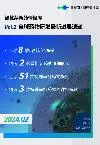Researchers craft new way to make high-temperature superconductors -- with a twist
2024-01-30
An international team has developed a new method to make and manipulate a widely studied class of high-temperature superconductors. This technique should pave the way for the creation of unusual forms of superconductivity in previously unattainable materials.
An international team that includes Rutgers University-New Brunswick scientists has developed a new method to make and manipulate a widely studied class of high-temperature superconductors.
This technique should pave the way for the creation of unusual forms of superconductivity in previously unattainable materials.
When cooled to a critical temperature, superconductors can conduct electricity without resistance or energy loss. These materials have intrigued physicists for decades because they can achieve a state of perfect conductivity allowing an electric current to flow indefinitely. But most superconductors only exhibit this peculiarity at temperatures so low -- a few degrees above absolute zero -- which renders them impractical.
The new work, published in Science, describes experiments that grew out of theoretical calculations that included those by a Rutgers team led by Jedediah Pixley, an associate professor in the Department of Physics and Astronomy in the Rutgers School of Arts and Sciences.
The experiments confirmed predictions by Pixley and Pavel Volkov, who at the time was a postdoctoral fellow at the Rutgers Center for Materials Theory. These predictions, based on mathematical models Pixley and Volkov (now at the University of Connecticut) devised to represent the underlying quantum physical behavior, projected how cuprate superconductors would behave if they were placed in proximity in specific configurations and at varying angles.
Superconductors are already in use today. Since the 1970s, scientists have employed superconducting magnets to generate the powerful magnetic fields needed for the operation of magnetic resonance imaging (MRI) machines. Maglev trains using the technology were introduced in the 1980s. More recently, scientists have harnessed the power of superconducting magnets to guide electron beams in experimental devices such as synchrotrons and accelerators.
In the future, scientists envision a world where ultra-efficient electricity grids, ultrafast and energy-efficient computer chips, and even quantum computers are powered by new kinds of superconducting materials.
The new experiments that validated Pixley and Volkov's ideas were conducted by a team at Harvard University led by professor and physicist Philip Kim.
"We took two cuprate superconductors -- materials that already were interesting -- and, in placing them together and twisting them in a precise way, made something else that was very interesting: another superconductor which could have lots of technological applications," said Pixley, a condensed matter theorist.
Because of its unique properties, the new superconductor is a promising candidate for the world's first high-temperature, superconducting diode, essentially a switch that controls the flow of electrical current, the researchers said.
Such a device could potentially fuel fledgling industries such as quantum computing, which rely on fleeting phenomena produced in materials like superconductors, they added.
Pixley, who joined the Rutgers faculty in 2017, earned his doctoral degree by studying the conditions involved in producing superconductivity in unconventional materials. The latest research extends the field of "twistronics," which involves twisting flat layers of two-dimensional materials to produce physical effects at the subatomic level that are observable on the macroscopic scale.
To Pixley, the study enlarges the paradigm of what materials can exhibit superconducting properties when twisted. The work yields other insights, as well.
"At the same time, we have found that this leads to a novel type of 'magnetic' superconducting state that has been long sought after, showing definitively that different superconducting phases can be reached via a twist," he said.
The experimentalists first split an extremely thin film of a superconductive cuprate -- nicknamed "BSCCO" and made of bismuth strontium calcium copper oxide -- into two layers. Then, maintaining frigid conditions, they stacked the layers at a 45-degree twist, like an ice cream sandwich with askew wafers, retaining superconductivity at the fragile interface.
Cuprates are copper oxides that, decades ago, upended the physics world by showing they become superconducting at much higher temperatures than theorists had thought possible. BSCCO is considered a high-temperature superconductor because it starts superconducting at about -288 Fahrenheit. That is very cold by practical standards, but astonishingly high among classical superconductors, which typically must be cooled to about -400 Fahrenheit.
The work opens the door to more experiments, Pixley said.
"It will be very exciting to extend these experiments to other configurations of superconductors -- twisted monolayers and a few twisted multilayers of superconductors at small twist angles," Pixley said.
Other researchers on the study included scientists from the University of British Columbia, Brookhaven National Laboratory, the Leibniz Institute for Solid State and Materials Research in Germany, Seoul National University in South Korea and the National Institute for Materials Science in Japan.
更多内容,请访问原始网站
文中所述内容并不反映新药情报库及其所属公司任何意见及观点,如有版权侵扰或错误之处,请及时联系我们,我们会在24小时内配合处理。
适应症
-靶点
-立即开始免费试用!
智慧芽新药情报库是智慧芽专为生命科学人士构建的基于AI的创新药情报平台,助您全方位提升您的研发与决策效率。
立即开始数据试用!
智慧芽新药库数据也通过智慧芽数据服务平台,以API或者数据包形式对外开放,助您更加充分利用智慧芽新药情报信息。




